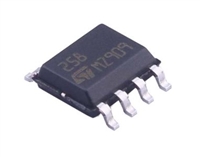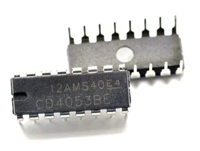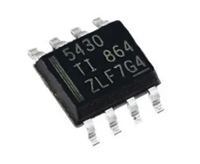3.
Macrocell Sections
Table 3-1.
Section
Macrocell Sections
Description
Each ATF1502AS(L) macrocell has five product terms. Each product term receives as its inputs
all signals from both the global bus and regional bus.
Product Terms and
Select Mux
The Product Term Select Multiplexer (PTMUX) allocates the five product terms as needed to the
macrocell logic gates and control signals. The PTMUX programming is determined by the design
compiler, which selects the optimum macrocell configuration.
The ATF1502AS(L) logic structure is designed to efficiently support all types of logic. Within a
single macrocell, all the product terms can be routed to the OR gate, creating a 5-input AND/OR
sum term. With the addition of the CASIN from neighboring macrocells, this can be expanded to
as many as 40 product terms with little additional delay.
OR/XOR/CASCADE
Logic
The macrocell’s XOR gate allows efficient implementation of compare and arithmetic functions.
One input to the XOR comes from the OR sum term. The other XOR input can be a product term
or a fixed high or low level. For combinatorial outputs, the fixed level input allows polarity
selection. For registered functions, the fixed levels allow DeMorgan minimization of product
terms. The XOR gate is also used to emulate T-type and JK-type flip-flops.
The ATF1502AS(L) flip-flop has very flexible data and control functions. The data input can come
from either the XOR gate, from a separate product term, or directly from the I/O pin. Selecting the
separate product term allows creation of a buried registered feedback within a combinatorial
output macrocell. (This feature is automatically implemented by the fitter software). In addition to
D, T, JK, and SR operation, the flip-flop can be configured as a flow-through latch. In this mode,
data passes through when the clock is high and is latched when the clock is low.
Flip-flop
The clock itself can be either one of the Global CLK signals (GCK[0:2]) or an individual product
term. The flip-flop changes state on the clock’s rising edge. When the GCK signal is used as the
clock, one of the macrocell product terms can be selected as a clock enable. When the clock
enable function is active and the enable signal (product term) is low, all clock edges are ignored.
The flip-flop’s Asynchronous Reset (AR) signal can be either the Global Clear (GCLEAR), a
product term, or always off. AR can also be a logic OR of GCLEAR with a product term. The
Asynchronous Preset (AP) can be a product term or always off.
The ATF1502AS(L) macrocell output can be selected as registered or combinatorial. The extra
buried feedback signal can be either combinatorial or a registered signal regardless of whether
the output is combinatorial or registered. (This enhancement function is automatically
implemented by the fitter software.) Feedback of a buried combinatorial output allows the
creation of a second latch within a macrocell.
I/O Control: The Output Enable Multiplexer (MOE) controls the output enable signal.
Each I/O can be individually configured as an input, output, or for bi-directional
operation. The output enable for each macrocell can be selected from the true or
compliment of the two output enable pins, a subset of the I/O pins, or a subset of the I/O
macrocells. This selection is automatically done by the fitter software when the I/O is
configured as an input, all macrocell resources are still available, including the buried
feedback, expander, and cascade logic.
Extra Feedback
The global bus contains all input and I/O pin signals as well as the buried feedback signal from all
32 macrocells. The switch matrix in each logic block receives as its inputs all signals from the
global bus. Under software control, up to 40 of these signals can be selected as inputs to the
logic block.
Global Bus/Switch
Matrix
Each macrocell also generates a foldback product term. This signal goes to the regional bus and
is available to four macrocells. The foldback is an inverse polarity of one of the macrocell’s
product terms. The four foldback terms in each region allow generation of high fan-in sum terms
(up to nine product terms) with little additional delay.
Foldback Bus
6
ATF1502AS(L) [DATASHEET]
Atmel-0995L-CPLD-ATF1502AS(L)-Datasheet_032014






 MAX6675资料手册参数详解、引脚配置说明
MAX6675资料手册参数详解、引脚配置说明

 LM258引脚图及功能介绍、主要参数分析
LM258引脚图及功能介绍、主要参数分析

 CD4052资料手册参数详解、引脚配置说明
CD4052资料手册参数详解、引脚配置说明

 一文带你了解TPS5430资料手册分析:参数介绍、引脚配置说明
一文带你了解TPS5430资料手册分析:参数介绍、引脚配置说明
